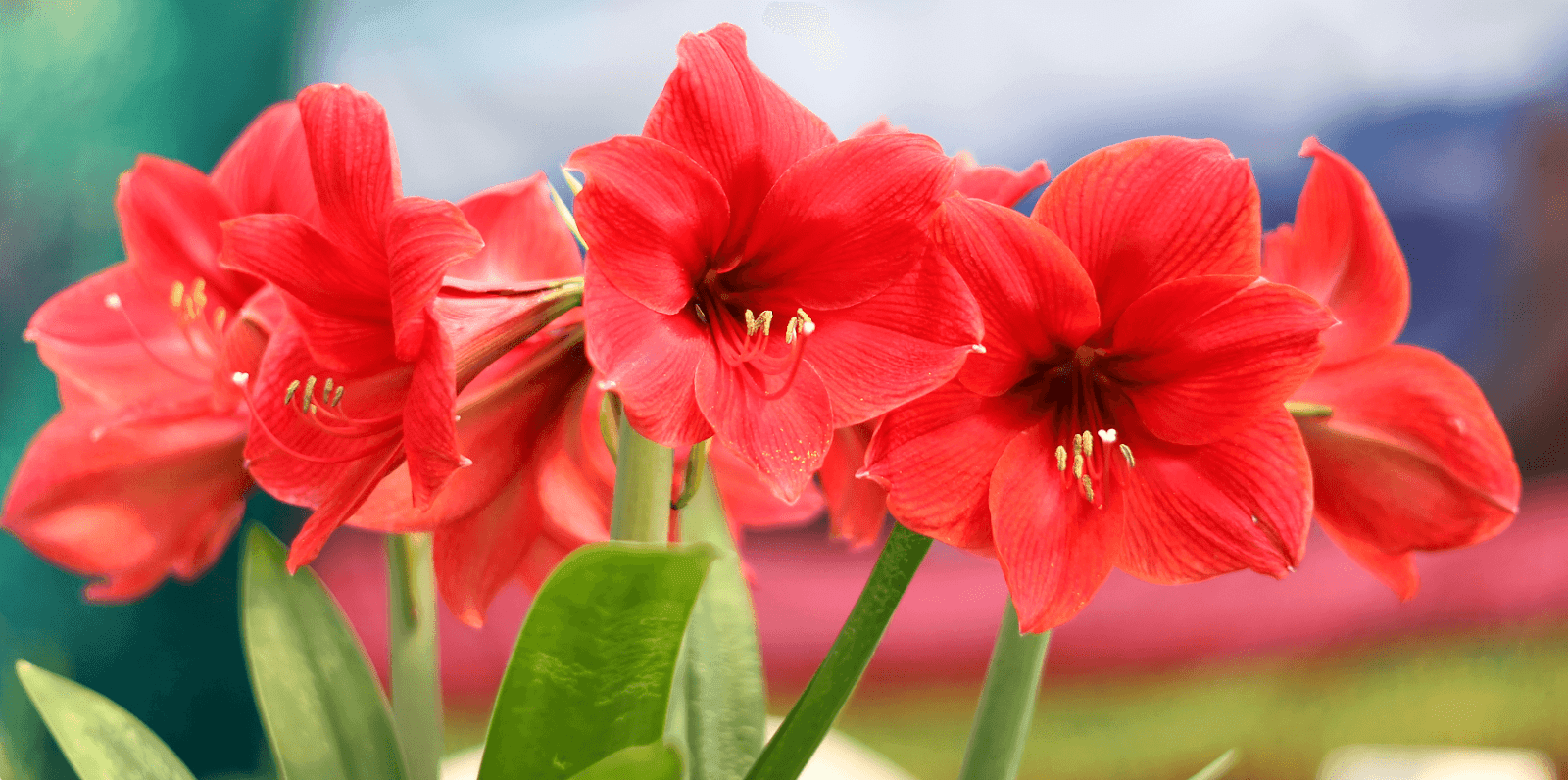Growing and Caring for Amaryllis

Amaryllis plants are among the most rewarding bulbs to grow, producing stunning, trumpet-shaped blooms that can add a touch of vibrant beauty to your garden or home. This eye-catching plant, particularly Amaryllis belladonna, is native to South Africa’s Western Cape region, flourishing in the rocky landscapes between the Olifants River Valley and Knysna.
If you’re looking for an easy-to-grow bulb with striking flowers that can brighten up your space during winter and early spring, amaryllis is an excellent choice. The plant typically takes about six to eight weeks to bloom, and when planted in mid-to late September, it should flower just in time for Christmas.
How to Grow Amaryllis
The first step to growing a healthy amaryllis plant is soaking the bulb for a few hours. This will rehydrate the roots, speeding up the growth process. Next, choose a pot that fits snugly around the bulb, as these plants thrive in smaller containers. Fill the pot with compost, set the bulb on top, and cover it with more compost. Water well and leave the bulb in a warm, dark place for a couple of weeks. Once a shoot begins to emerge, move the pot into a sunny spot, and in just six to eight weeks, you can expect beautiful blooms.
Tips for Planting Amaryllis
To ensure continuous blooms throughout the season, stagger your plantings. By planting bulbs at different times, following the eight-week rule, you can enjoy amaryllis flowers well into Easter. For instance, if you want flowers for Christmas, plant in September. These plants thrive in a rich, well-drained growing medium, and incorporating grit or sand, along with organic material such as leaf mould or well-rotted manure, can help promote healthy growth.
Amaryllis bulbs prefer narrow containers that allow good root development. Choose a container that’s about an inch wider than the bulb itself, and ensure it has proper drainage to avoid rot. Fill the container halfway with new potting soil, and position the bulb with its roots resting on the soil. Add more soil around the bulb, leaving one-third to one-half exposed. Water thoroughly and place the pot in a sunny window.
Caring for Amaryllis Bulbs
Watering is crucial but must be done correctly to avoid over-watering. Water the plant when the top 2 inches of soil feel dry, and always let the container drain freely. Too much water can lead to bulb rot and attract pests. To promote flowering, use a houseplant fertiliser with a high phosphorus content when new growth is visible. Look for fertilisers labelled with a higher middle number, such as 10-20-15, which indicates 20% phosphorus content, essential for strong blooms.
When your amaryllis flowers begin to open, move the plant out of direct sunlight to extend the life of the blooms.
Encouraging Your Amaryllis to Reflower
After your amaryllis has finished flowering, don’t discard it! With some care, you can get it to bloom again. As the bulb continues to grow, repot it into a slightly larger container with fresh compost. After flowering, snip off the flower bud at the base to redirect the plant’s energy back to the bulb. Water the plant well but allow the soil to dry out between watering. Once the risk of frost has passed, you can move your amaryllis outdoors for the summer months, watering and feeding it weekly.
In August, stop watering altogether to encourage a dormancy period. The leaves will start to yellow and die back. In mid-October, bring the plant back inside and begin watering again. This cycle of dormancy and cool nights will help stimulate new flower buds.
Common Growing Problems
Over-watering is the most common issue with amaryllis plants. They need well-draining compost, and bulbs should never sit in water, as this can lead to fungal infections. You might notice yellowing leaves or a droopy stem if there’s too much moisture. Ensure you’re using free-draining compost and that the pot allows excess water to escape.
Another issue could be the plant growing too quickly due to too much warmth. Support droopy stems with a cane and grow the plant in cooler conditions the following year.
Pests like snails, slugs, and the amaryllis caterpillar can cause damage to the plant by eating the leaves and boring into the bulb. Hand-pick and remove these pests as soon as you spot them.
Closing Thoughts
Amaryllis is a show-stopping addition to any garden, and with the right care, it will reward you with spectacular blooms year after year. Whether you’re brightening up your home for the holidays or adding a dash of colour to your garden, amaryllis plants are a joy to grow.
Ready to add this beautiful plant to your collection?
Explore our selection of amaryllis bulbs and start growing your own today!
https://ovdckyja.elementor.cloud/product-category/plants/bulbs-tubers/



